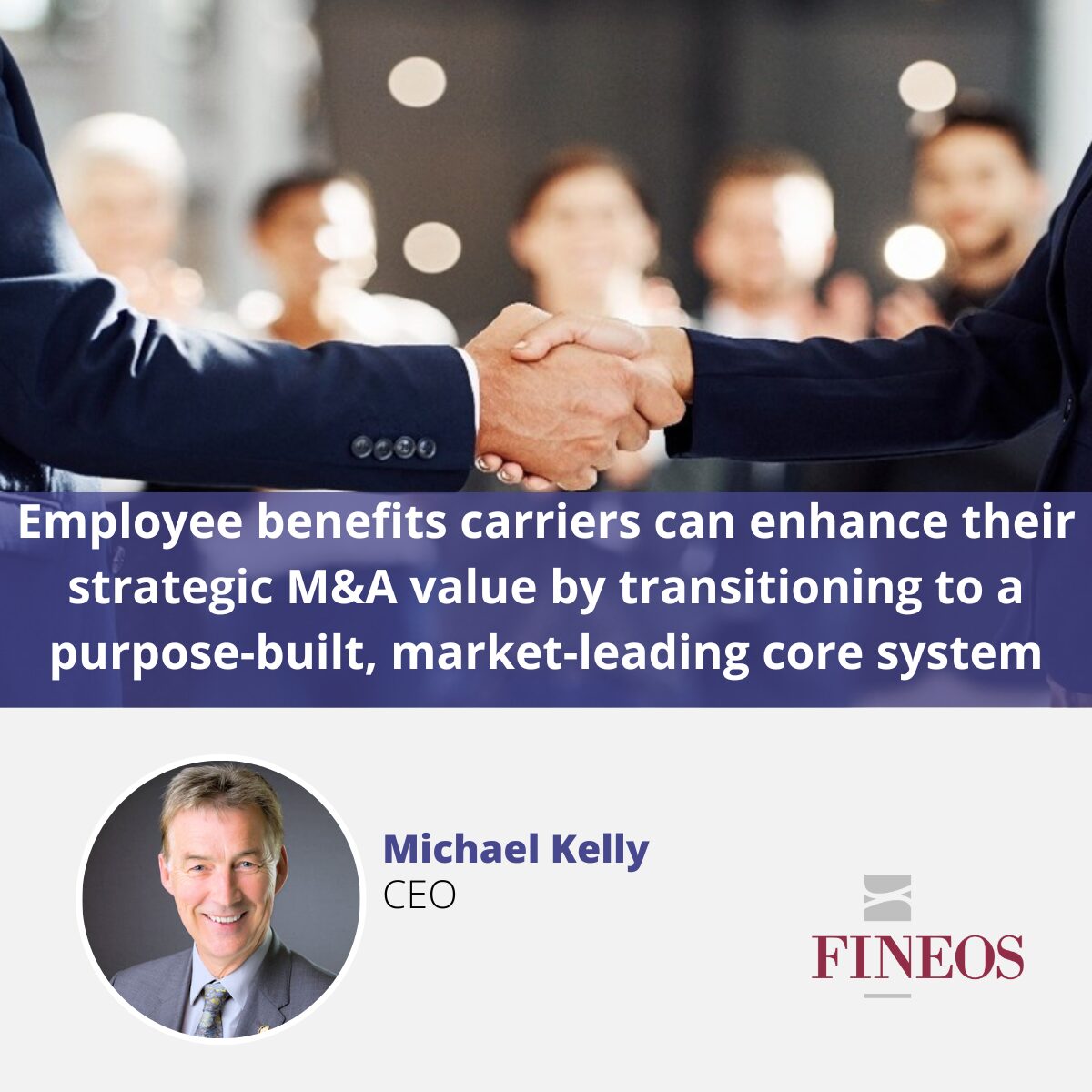This ‘Best of Breed’ declaration was made in the early 2000s by Larry Ellison, CTO and former CEO of Oracle. It referred to the growing dominance of enterprise software suites over multiple point systems integrated together in the Enterprise Resource Planning (ERP) systems market. His argument being that having an ERP suite is a more elegant and logical approach rather than relying on various disparate systems, technologies, and point solutions that require continuous integration and heavy maintenance costs. Every product module within an enterprise suite logically fits and works together, resulting in one seamless user experience, one system to manage from an IT perspective, and no functional overlaps, gaps, or costly, never-ending custom integrations. The enterprise suite unifies all the function and data in one easily accessible place for everyone and delivers a true multiplier effect, offering business and IT economies of scale—ensuring agility, consistency, certainty, and maximum overall value for money. It also provides consistent intuitive user experience, making work easier and more productive for both business operations and IT support teams.
Of course, Larry’s prediction was correct, and today we see the dominance of enterprise product suites in ERP, HCM, and other enterprise software market segments. The leading systems are provided as Software-as-a-Service (SaaS) platforms, meaning they are continually managed, advanced, and updated by their specialized vendors. No IT department of a manufacturing or services business today would consider writing its own ERP system.
When we look across the core systems landscape in financial services, we see the same enterprise software suite trend. Financial institutions are gaining massive efficiencies and agility by moving away from legacy core systems, vendor point solutions, and large-scale in-house software development toward standardizing operations on a single ‘purpose built’ enterprise core suite.
The Need for a Modern, ‘Purpose-Built’ Employee Benefits Core Suite – A Life, Accident and Health Platform to Unleash Carriers from the Burden of Legacy Systems
The employee benefits business has undergone a complete transformation. Employers recognize that an employee benefits plan and service can significantly impact an employee’s decision to join or stay with an employer. Therefore, when selecting a benefits provider, employers want the very best experience and value for both their employees and their own HR team —including seamless enrollment, billing, policy management, claims, payments, and absence management. In addition to value and service quality, employers increasingly want bundled products and one-stop-shop carriers that provide a unified, intuitive user digital experience.
Bundled products typically include group, voluntary (supplemental), and absence benefits, ideally managed as a single user experience in the carriers’ portals and, more importantly, in one modern core employee benefits platform that delivers operational excellence and superior customer experience. Leading carriers also integrate complementary services such as well-being programs, bereavement support, and chronic disease recovery services, enhancing personalized prevention, protection, and care.
Absence management has been a game-changer in the group employee benefits industry and is now a “permission-to-play” requirement for carriers. Another key development is the growth in voluntary benefits, which broadens the available benefits package and creates carrier cross-selling opportunities. Cross-selling to an existing, satisfied client is up to 10 times easier and more cost-effective than acquiring a new client. Market-leading carriers have already implemented integrated absence and disability management within a single core SaaS system (IDAM)—replacing a plethora of outsourced absence management and legacy systems. These carriers are reaping rewards in the form of significantly greater operational efficiency, improved customer satisfaction, and impressive new business growth.
A Modern Core Platform Transforms Absence & Claims, but it Goes Much Further
Adjudicating an absence presents an opportunity for early intervention, enhancing the employee experience for disability and related claims that may arise. Absence and claims management are at the heart of the carrier’s value proposition—this is where carriers aim to shine. Delivering a personalized, seamless experience can significantly impact carrier reputation, customer retention, and business growth.
A modern core system automatically processes and assigns absence cases based on complexity, urgency, and required expertise. The assigned user has a full 360-degree view of the employee (member), including every product and transaction they have interacted with. When an absence transitions to a paid leave or disability claim, payments can be triggered automatically. Users can also see on a modern ‘purpose built’ system ancillary benefits the individual may be entitled to, such as hospital indemnity, critical illness benefits, or additional service and/or accommodations for the claimant and their family. If the claim case develops into a serious long-term disability, a long-term care (or even a death), it can all be managed within the same case on a single modern customer centric core system, with every effort being made by the carrier’s case manager to support the person to recover and return to work.
Users can quickly access policy contract details, billing history, underwriting criteria, absence and claims cases in a couple of keystrokes within a single ‘purpose built’ modern core platform. If additional systems (including third-party platforms) need to be checked, a modern core platform will have API connectors to enable seamless two-way communication.
Lastly, with all the core data accessible real-time in one employee benefits core platform, this enables the opportunity to continually embed robust AI driven capabilities to empower users with accelerators that improve customer experience, operational performance, while also meeting with ethical and industry regulatory standards.
The Problem with Legacy Systems – Why the Shift Away from them is Urgent
In contrast, legacy system carriers operate in a high cost ‘unique’ IT systems landscape environment, relying on layers of ‘glue’ software, fragmented point systems, and various front-end engagement technologies. Their custom-built IT landscape results in high costs and continuous inefficiencies. Because these systems are unique and not industry standard, legacy core system carriers struggle with IT resource constraints—shouldering the full cost and maintenance burden of these outdated core systems, instead of benefiting from a shared modern SaaS platform business model, where many carriers are contributing to the platform advancement in line with industry needs and best practice trends. In many cases the ‘opportunity costs’ of the legacy burden are not fully recognized by employee benefits carriers because, until now, legacy system carriers have not had a reference employee benefits platform that their competitors use to compare themselves against.
Legacy system carriers tend to house different lines of business on separate core systems and often outsource certain functions to TPAs. In recent years, some have built engagement veneers at the front-end to create the illusion of a unified core system. However, behind the scenes, they still rely on outdated, inefficient legacy systems and infrastructure. Billing and claims calculations on these aging systems are sometimes inaccurate, leading to financial leakage. During FINEOS implementations, we have uncovered numerous instances where the cost savings from eliminating financial miscalculations and process inefficiencies have covered the system implementation cost and more.
The Future – A Modern Core Platform is the Only Path Forward and is Very Achievable
At FINEOS, we believe employee benefits carriers cannot sustain their legacy transactional core systems and glue-based IT architectures much longer. Those who delay modernizing their core systems will face increasing operational inefficiencies and mounting workforce pressures. With data fragmented across multiple systems and no unified store or view, the inaccuracies and inefficiencies will persist—placing a huge burden on IT teams to maintain and build temporary fixes. Industry change is increasing so while some may think they can survive by continually throwing money and resources at the problem they will eventually get caught out.
Implementing a Purpose-Built Core System is now very Straightforward
The good news is that implementing a modern core employee benefits platform has never been easier or less risky. FINEOS has delivered initial production-ready versions of FINEOS AdminSuite in just 9 months, and individual modules (such as group and voluntary claims) in as little as 15 weeks. How has this been possible? Because FINEOS is ‘purpose built’ as a SaaS core suite for employee benefits and is already proven as a fully scaled and robust production system that is running 24X7 today, with millions of lives, collecting and paying billions of dollars for multiple carriers in production. There is no big software build required to implement FINEOS – the carrier ‘adopts’ FINEOS industry standard product and best practice. The adoption of FINEOS is an opportunity to change and optimize operational processes and to retire legacy systems and the accompanying technical debt built up over many years.
Of course, after the initial FINEOS production release and deployment, carriers and system integrators must ensure proper integration and testing within the carrier’s existing IT systems landscape—which typically extends an initial go-live timeline by between 30 and 50%, depending on the size and complexity of the carrier’s business and their technology landscape.
Early production go-live builds confidence and enables the business to focus on new business scaling; while moving quickly to legacy core system data migration and of course add-on AI-driven operational performance and customer experience improvements. Data migration from legacy systems is quickly becoming the area of real and important focus when implementing a modern core system, as the quicker this happens the faster the legacy systems can be retired, freeing up valuable resources and investment dollars that can be used in the future.
A modern platform is kept in line with the needs of the business and continually updated with industry regulatory compliance, new capabilities and best practice, so the carriers’ IT and Business teams are free to focus on delivering their unique products, service, surround technologies and digital customer experience.
A Modern Core Employee Benefits Platform is a Paradigm Shift – Don’t Get Left Behind
The gap is already widening between carriers embracing modern core platforms and those clinging to legacy core systems, glue software, point solutions and inefficient workarounds.
Modern core platforms will become Systems of Intelligence with embedded AI across the whole suite. They will connect to internal and external platforms to deliver a seamless connected Ecosystem, and all of this will accelerate operational performance by giving users the power to provide a superior customer experience. This transition represents a true industry paradigm shift, – a paradigm shift analogy could be like how automobiles replaced horse-drawn carriages. To borrow a quote from ‘Henry Ford’, the founder of the Ford Motor company, sometimes used by our own Head of Engineering, Dave Solan:
“If I had asked people what they wanted, they would have said faster horses.” – Henry Ford.
Henry Ford invented the FORD Model T



